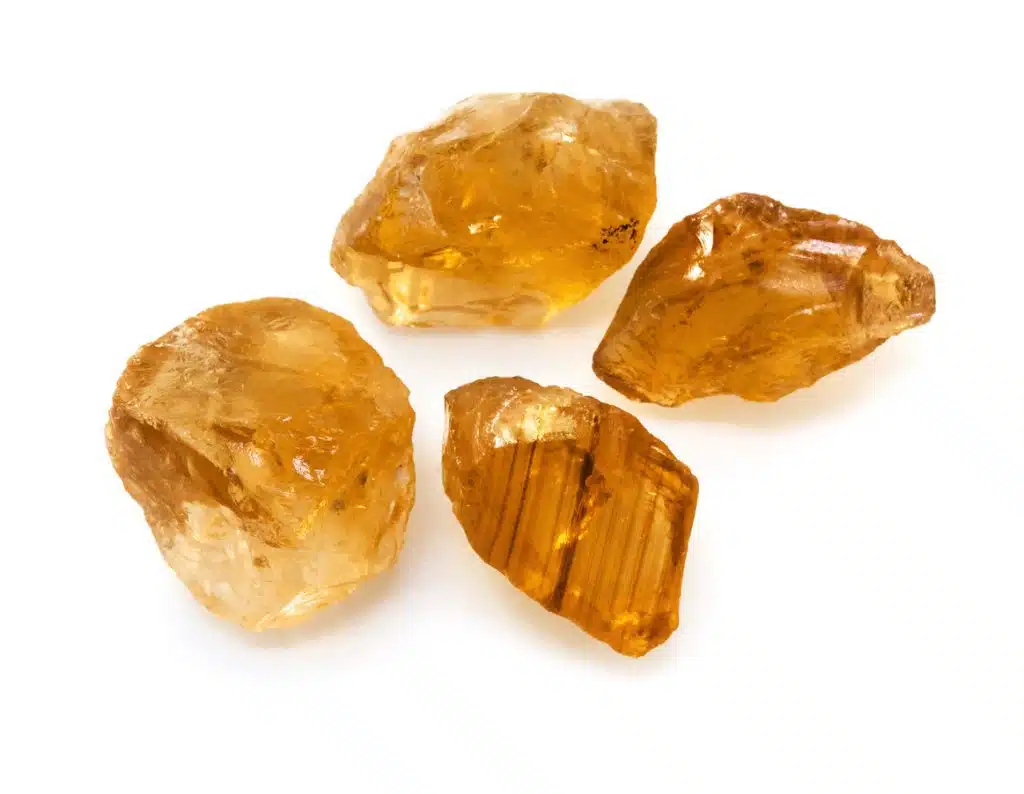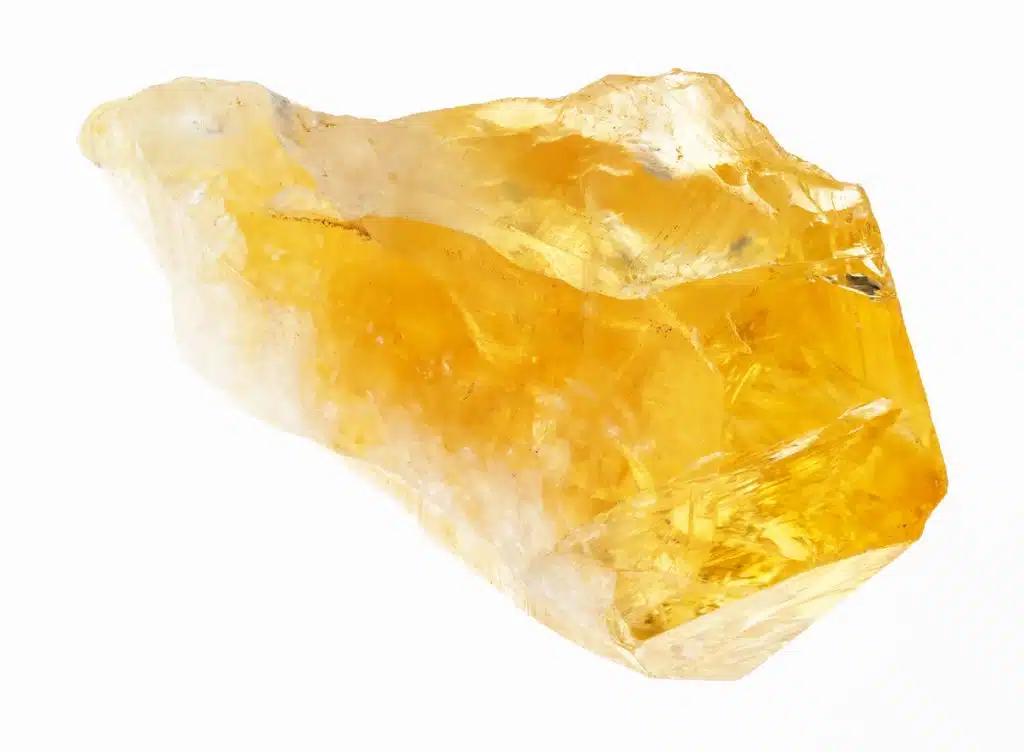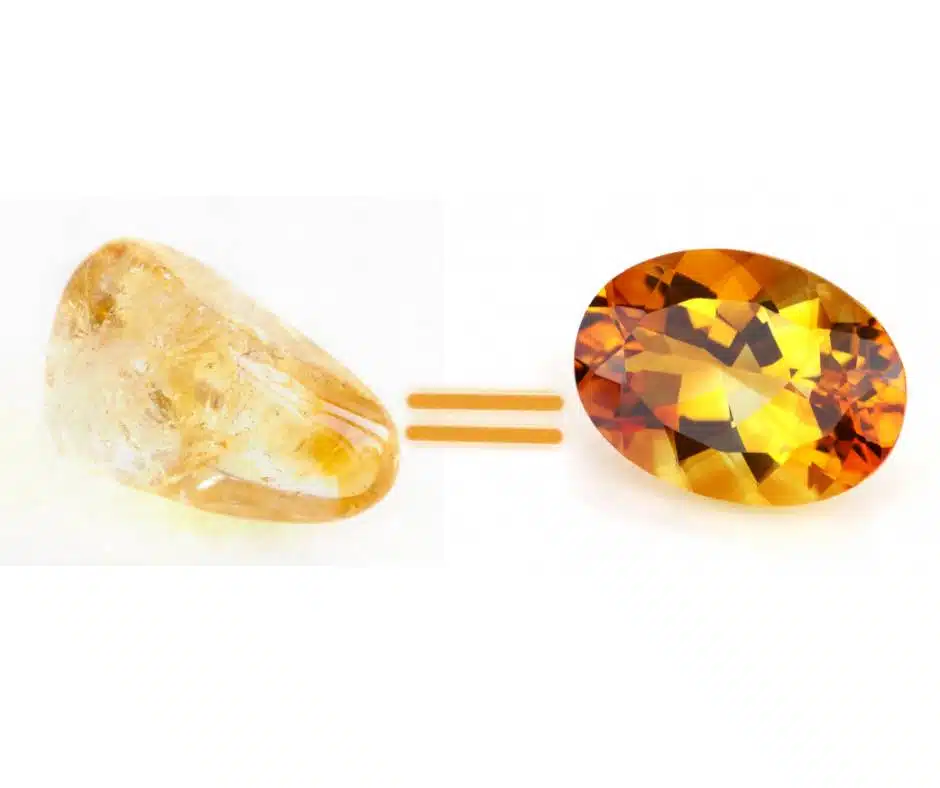Crystal enthusiasts love to explore the world of gemstones, each with its unique properties and meanings. Citrine and topaz are two gems that are often confused with each other. Both have yellow hues, and their names are sometimes used interchangeably. However, they are different crystals with distinct characteristics and value. In this blog post, we will dive into the world of citrine and topaz to see if they are the same and uncover their differences.
Summary: Are Citrine and Topaz the Same?
Citrine and topaz are distinct gemstones often mistaken for each other due to their similar yellow hues. Citrine belongs to the quartz family and primarily displays colors from yellow to brownish-orange. Topaz, part of the silicate mineral family, comes in varied shades including blue, pink, and yellow. While citrine originates predominantly from Northern Africa and parts of Europe, topaz is mainly sourced from Russia and Brazil. In terms of hardness, citrine ranks 7 on the Mohs scale, while topaz ranks slightly harder at 8. Metaphysically, citrine symbolizes abundance and joy, whereas topaz is linked to mental clarity and strength. Both stones have significant usage in jewelry, but their value can vary based on rarity and treatment methods.
| Attribute | Citrine | Topaz |
|---|---|---|
| Family | Quartz | Silicate Mineral |
| Hardness (Mohs) | 7 | 8 |
| Colors | Yellow to brownish orange, rare reddish hue | Blue, pink, yellow, orange, colorless, reddish-orange |
| Origin | Northern Africa, Spain, Portugal, France | Russia, Brazil |
| Metaphysical | Abundance, good fortune, joy | Mental clarity, visualization of goals |
| Price | Natural citrine more expensive; Common citrine typically affordable | Specific colors like Imperial or pink can be expensive |
| Usage | Often used in jewelry for everyday wear | Due to cleavage, care needed for certain jewelry types |
| Availability | Abundant (mostly heat-treated) | Varied, certain colors rare |
| Significance | “Merchant’s Stone”, wealth attraction | Stone of Strength, mental clarity |
| Treatments | Often heat-treated | Some varieties (e.g., blue) often heat-treated |
What are Citrine and Topaz?
Gemstones have always been revered by cultures around the world. They’re more than just beautiful rocks; they have stories, significance, and sometimes, confusion tied to them.
Historical Context
The Ancient Greeks believed that topaz could make one invisible, while citrine, known as the “merchant’s stone”, was said to attract wealth. And oh! The stories of African shamans using citrine in healing rituals are tales that could warm any heart on a cold night.
Popular Usage in Jewelry
Now, if you’ve ever set foot in a jewelry store (or scrolled through an online one), you’d notice that both citrine and topaz have made their solid mark. From dainty earrings to statement necklaces, they reign supreme, especially when we talk about November birthstone jewelry.
But here’s the deal, not all that glitters is gold, and not every yellow gem you see is what it seems!
Are they the same?
So, the million-dollar question: are citrine and topaz the same? Well, in the realm of modern gemology, citrine vs topaz is a hot debate, and it’s easy to see why.
Common Misconceptions
Back in the days, any yellow gem might have been labeled topaz by local jewelers. This frequent misidentification led many to believe that yellow citrine and yellow topaz were interchangeable. But they are as different as the sun and the moon.
Brief Overview of Key Differences
Though both stones share a few similarities, especially when viewed in the popular shade of yellow, they belong to entirely different families in the gem world. Citrine is a proud member of the quartz family, while topaz belongs to the silicate mineral family. More on this soon!
Types of Topaz
Okay, before we jump onto our citrine caravan, let’s explore the vibrant world of topaz.

Blue Topaz
- Characteristics: Arguably the most popular gemstone from the topaz family. Often, blue topaz undergoes heat treatment to achieve that stunning shade. There’s also the London blue variety, which is a deeper, teal blue.
- Value and Significance: The blue of the topaz often reminds people of calm seas and clear skies. Blue topaz jewelry pieces are frequently purchased, making them a staple in many jewelry collections.
Imperial Topaz
- Characteristics: Now, this is where topaz becomes truly majestic. Imperial topaz dazzles in shades of reddish orange with red flashes, and sometimes, a pale yellow.
- Rarity and History: The rarity of this gem makes it a prized possession. In ancient times, only the Russian royal family could own the imperial variety. Talk about exclusivity!
Yellow Topaz
- Characteristics: Yellow, glorious yellow! The yellow topaz can range from pale yellow to a rich golden hue, often mistaken for the yellow citrine. However, the yellow of topaz has a warmth and depth that sets it apart.
- Mythology and Cultural Significance: Yellow gems, especially the yellow topaz, have been symbols of the sun and its energy. The ancient Greeks believed that wearing topaz could give them strength.
Colorless Topaz
- Characteristics: Pure topaz, in its most natural form, is actually colorless. It’s the impurities and treatments that give it its variety of colors.
- Use in Jewelry: Due to its clear nature, it’s frequently used as an affordable alternative to other gems in jewelry.
Pink Topaz and Spanish Topaz
- Characteristics: While pink topaz is rare and coveted, Spanish topaz isn’t from Spain nor is it strictly topaz. It’s often a reference to citrine and its orange-yellow hue.
- Sources and Pricing: Pink topaz is one of those gems that can fetch a high price due to its rarity. On the other hand, Spanish topaz, often being citrine, is more available and thus more affordable.
Types of Citrine
Citrine, often known as the “healing quartz”, has its own set of colors and types that make it stand out.

Natural Citrine
- Characteristics: Unlike most citrine available in the market, which is heat treated, natural citrine has a pale to medium yellow to brownish orange variety.
- Rarity and Value: Genuine, natural citrine is rare, which makes it more valuable than its heat-treated counterparts.
Gold Topaz or Citrine?
This is where many get tripped up. While there is a gold topaz, there’s also a citrine with a deep gold hue. It’s essential to note that despite the color similarities, they are different stones.
High-Quality Precious Citrine
- Characteristics: A high-quality citrine dazzles and is transparent. It should be free from any inclusions, making it a gem-lover’s dream.
- Factors Determining Quality: Carat weight, clarity, and the depth of citrine color play a huge role in determining the value of citrine stones.
Comparison of Citrine and Topaz
While both these gems can be mistaken for each other, especially in certain shades of yellow, modern gemology has given us tools and knowledge to differentiate them.
Similarities
Color Variations:
The first and the most noticeable similarity between citrine and topaz is their color. Both of these gemstones come with a permanent yellow color. Citrine is known for its vibrant range of golden hues that vary from light to dark yellow and can sometimes also have hints of orange and brown color. On the other hand, Topaz is known for its pure golden yellow color with high brilliance. However, the truly fascinating fact about these two gems is that both of them can be found in a colorless form, which is quite rare but holds immense value in the market.
Usage in Jewelry:
Both are cherished in the world of jewelry. Whether you’re talking about topaz jewelry pieces that have graced royal necks or citrine jewelry adorning a modern fashionista – both have their moments of shine.
Abundance and Prosperity:
Citrine and topaz are both considered to be stones of abundance and prosperity. Citrine is known as the “merchant’s stone” because of its ability to attract success, wealth, and good fortune. Topaz, on the other hand, is believed to promote abundance through the manifestation of desires and the removal of blockages that hinders one’s ability to attract. Both stones possess an energy that can amplify the power of intention, making them essential tools for endeavors that require an extra boost of manifestation.
Read also: What does citrine attract?
Solar Plexus Chakra:
Citrine and topaz are both associated with the Solar Plexus Chakra – the energy center for self-confidence, personal power, and manifestation. Citrine is considered to be one of the best stones for unblocking and balancing the Solar Plexus Chakra. It stimulates creativity, personal willpower, and the pathway to successful ideas and manifesting goals. Topaz is also known as a stone of the Solar Plexus Chakra, it assists in giving clarity and direction to one’s spiritual journey.
Read also: What does citrine do?
November Birthstones:
Citrine and topaz are both the birthstones for November. Both stones make amazing gifts for those born in this month, helping to invoke positive energy that brings abundance and prosperity to the wearer.
Difference Between Topaz and Citrine
Range of Colors
- Topaz: Beyond our beloved yellow, topaz shines in shades of blue, pink, orange, and even colorless. In fact, orange topaz, specifically the reddish-orange Imperial topaz, is the most valued.
- Citrine: The hues of citrine are typically in the yellow to brownish orange variety. Rarely, there’s a reddish hue too.
Composition
- Topaz: A silicate mineral of aluminium and fluorine. What’s captivating is that pure topaz is colorless. The different hues are often a result of impurities or treatments in the crystal structure.
- Citrine: Belonging to the quartz family, citrine is essentially a yellow quartz.
Hardness
- Topaz: On the Mohs scale, topaz ranks an 8, making it a pretty hard gem. However, due to perfect cleavage, it can split with a single sharp blow, making it somewhat fragile for certain types of jewelry.
- Citrine: Citrine, being a member of the quartz family, ranks 7 on the Mohs scale, making it slightly softer than topaz but still durable for everyday wear.
Specific Gravity, Price, and Other Factors
Each of these stones has its uniqueness when it comes to weight, pricing, and other factors. For instance:
- The specific gravity of topaz is generally higher, making it heavier for its size compared to citrine.
- Price-wise, natural citrine, given its rarity, might fetch a higher price than common citrine. On the other hand, certain topaz colors, like the Imperial or pink, can be more expensive due to their rarity.
- When we talk about availability, citrine (though mostly heat-treated) is more abundantly available than topaz, especially the more rare colors of topaz.
Origin
- Topaz: While topaz is found in various countries, Russia and Brazil are the biggest sources. Imperial topaz originates from Russia and pink topaz from Brazil.
- Citrine: The most abundant citrine comes from Northern Africa, particularly Madagascar. However, naturally mined citrine is available only in a few places including Spain, Portugal, France,
Metaphysical Properties
- Topaz: It is known to be an excellent stone for mental clarity and focus, especially when it comes to visualizing goals. It’s often used in meditation and manifestation practices.
- Citrine: It is believed to be a stone of abundance, good fortune, success, joy, and optimism. This gemstone has been utilized for centuries to attract wealth, health, and prosperity. It’s often used for protection against negative energies and self-destructive patterns.
Symbolization
Topaz: Known to the ancient Greeks as the “Stone of Strength”, it’s believed to provide mental clarity. Some also believe blue topaz can aid in clear communication.
Citrine: Often referred to as the “merchant’s stone”, citrine is believed to attract wealth. African shamans have used it for its healing properties, and some even believe it can provide mental clarity, just like topaz.
It’s easy to see why citrine and topaz can be mistaken for each other – however, the differences are simple enough to recognize when you know what to look out for. Whether you prefer citrine or topaz, they’re both beautiful gems that are sure to make any jewelry piece sparkle with brilliance.
Citrine and Topaz in the Spectrum of Yellow Gems
Yellow gemstones have a certain charm to them, don’t they? They capture the warmth of the sun and the zest of life. While citrine and topaz are the frontrunners, there are other contenders of frequently purchased yellow gemstones:
- Yellow Sapphire: This is another frequently purchased yellow gemstone. It’s harder than both citrine and topaz, making it a durable choice for jewelry.
- Smoky Quartz: A variety of quartz, smoky quartz can sometimes have a yellowish hue but is more renowned for its brownish shades.
- Amethyst: Now, you might be thinking, “Isn’t amethyst purple?” And you’d be right. But when amethyst undergoes heat treatment, it can turn into a citrine color. Nature’s magic!
Conclusion
In conclusion, citrine and topaz are two different gemstones that have similarities along with distinct differences. Citrine has a wide range of golden hues while topaz is known for its pure golden yellow color. Additionally, both stones are associated with the Solar Plexus Chakra and are often used in meditation and manifestation practices. But when it comes to hardness, topaz is slightly harder than citrine and can be more expensive than its vibrant sister gemstone. Despite their differences, both stones are beautiful options that will add a sparkle of sunshine to any jewelry piece.
